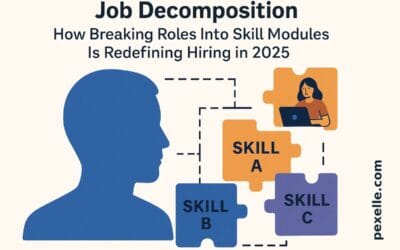The Advantages of Localized Skill Mapping Compared to Global Frameworks

Introduction
Skill mapping is the process of identifying, categorizing, and analyzing the competencies required for various jobs and industries. While global or standardized frameworks like ESCO, O*NET, and NSF skill taxonomies provide a consistent language for skills across countries, they often lack the granularity and adaptability needed for local markets. Localized skill mapping conducted at the level of a specific city, region, or country can address these gaps by reflecting unique economic, cultural, and labor market realities.
1. Alignment with Local Labor Market Needs
Global frameworks tend to generalize skills to suit a wide range of industries and regions. However, local skill mapping allows for the identification of:
- Region-specific job roles (e.g., maritime logistics in coastal cities, agri-tech in rural farming areas)
- Local industry demands based on current market trends
- Emerging skill gaps driven by local technology adoption rates
This alignment ensures that education providers, workforce agencies, and employers invest in training programs that match actual hiring demand in that city or country, rather than a generic international template.
2. Cultural and Language Adaptation
Many skills are expressed and practiced differently depending on the cultural context. For example:
- Communication styles vary between high-context cultures (e.g., Japan) and low-context cultures (e.g., Germany).
- Customer service expectations differ between tourism-focused economies and manufacturing-driven ones.
A localized framework can translate and contextualize skill definitions to match local languages, idioms, and workplace norms, which makes training materials more effective and adoption rates higher.
3. Integration with Local Education and Certification Systems
National and municipal governments often have unique qualification frameworks or technical training standards. Localized skill mapping:
- Maps skills directly to local degrees, diplomas, and certifications
- Enables clear pathways between education and employment
- Helps policymakers identify misalignments between academic curricula and real-world job requirements
This creates a closed feedback loop where training institutions adjust courses quickly to meet evolving employer needs.
4. Real-Time Responsiveness to Economic Changes
Global skill frameworks are updated on a large-scale cycle (sometimes annually or biannually). By contrast, local skill maps can be updated continuously, allowing:
- Faster reaction to economic shocks (e.g., a city’s manufacturing sector shifting to EV battery production)
- Rapid addition of emerging roles in startups or niche sectors
- Agile workforce planning for seasonal or event-driven industries
This responsiveness makes local economies more resilient.
5. Stronger Employer Engagement
When skills are mapped at the city or country level, local employers are more likely to participate in defining and validating them.
Benefits include:
- Industry-specific terminology that employers actually use in job postings
- Higher adoption of the framework by recruiters and HR teams
- Better trust between workforce planners and private sector stakeholders
6. More Accurate Data for Policy and Funding
Localized skill mapping provides fine-grained data that helps:
- Allocate public funding to industries with the highest return on investment
- Design targeted reskilling programs for vulnerable groups
- Support regional development strategies tied to specific economic clusters
This data precision is especially valuable in developing economies where resources must be deployed with maximum impact.
Conclusion
While global skill frameworks offer interoperability and comparability across countries, localized skill mapping delivers precision, cultural relevance, and responsiveness that can significantly improve workforce readiness.
The ideal approach often combines both: using a global backbone for standardization and a local overlay for customization. This hybrid model ensures that cities and countries remain connected to global labor markets while also meeting their unique economic and cultural needs.
Source : Medium.com




